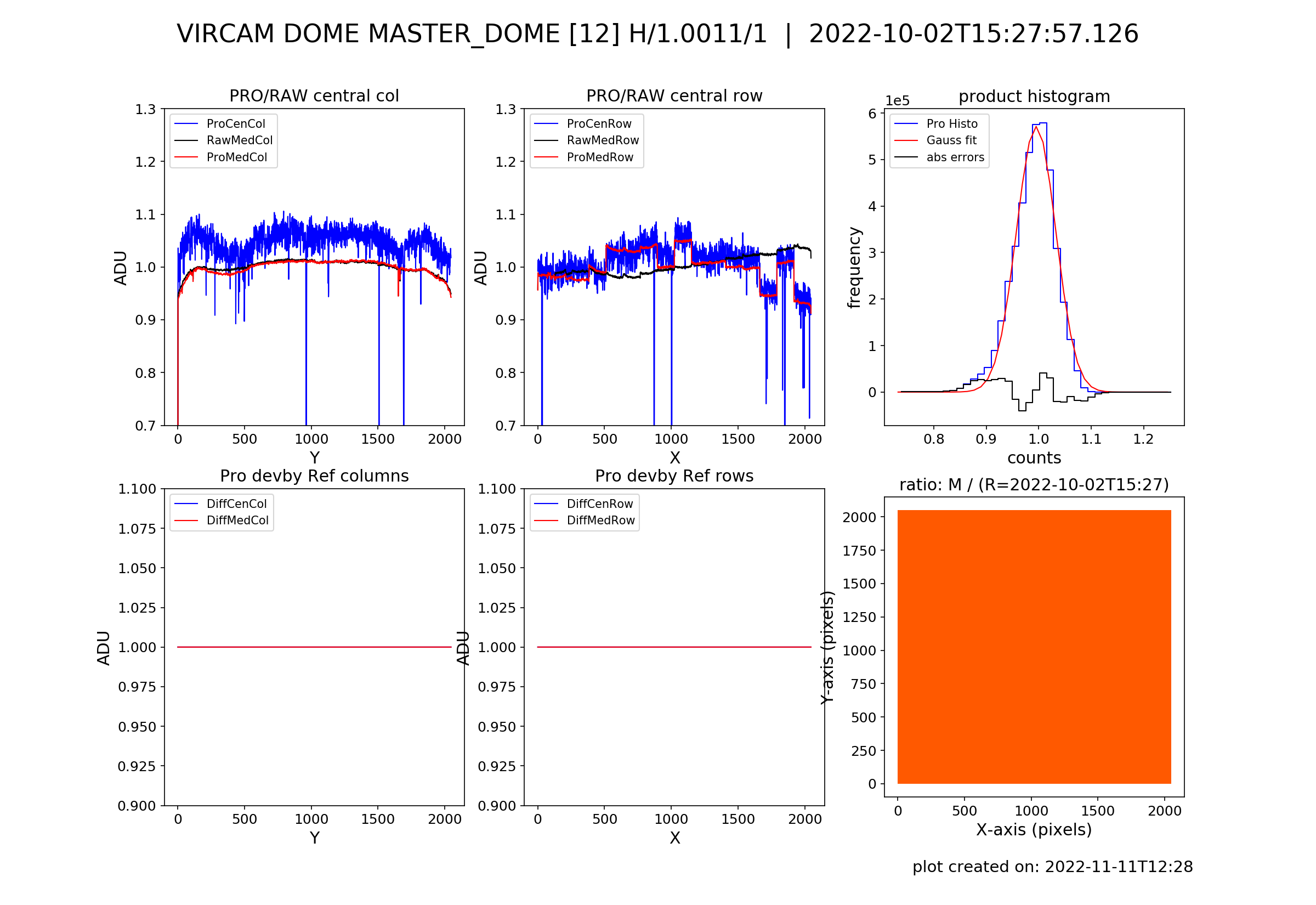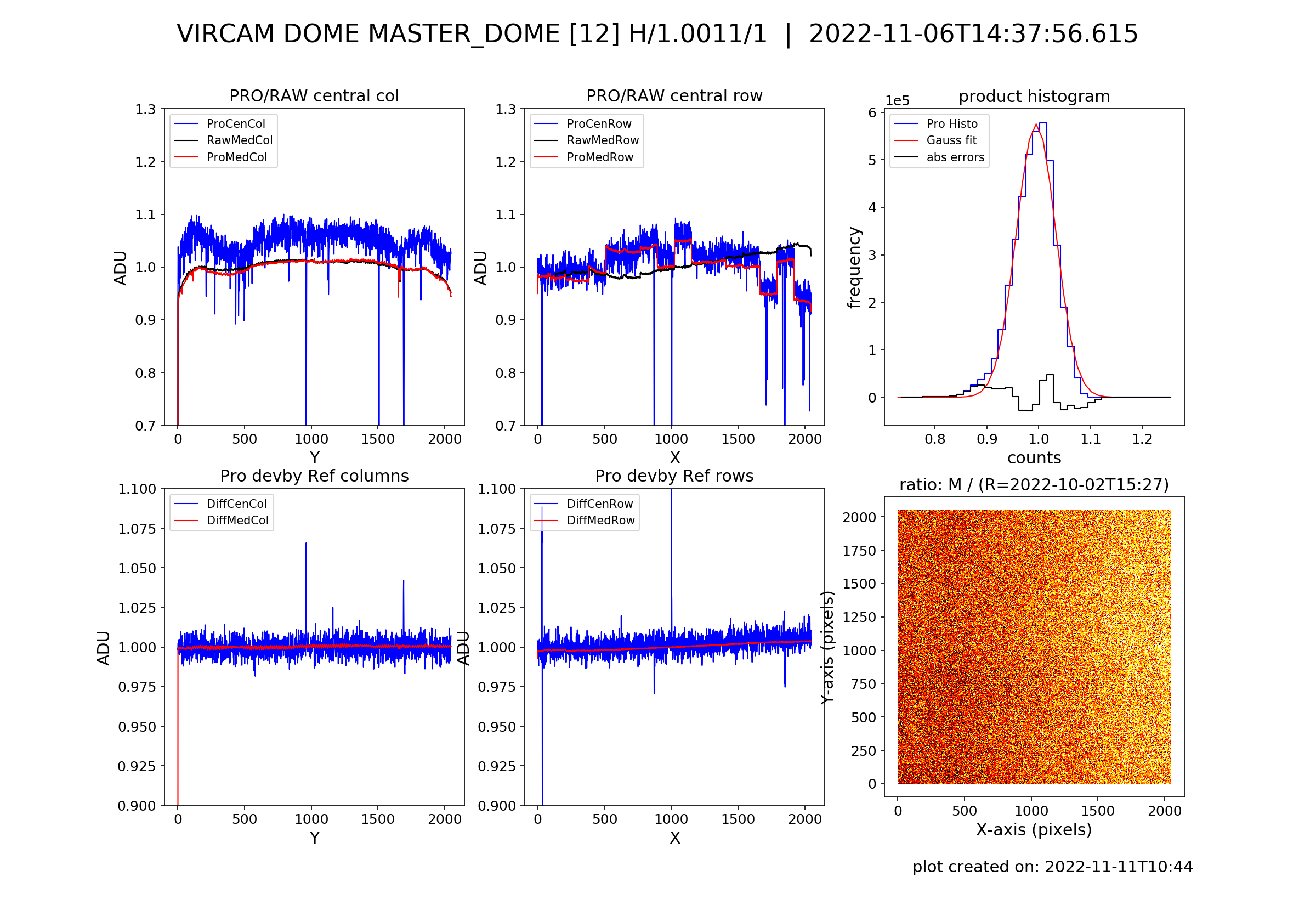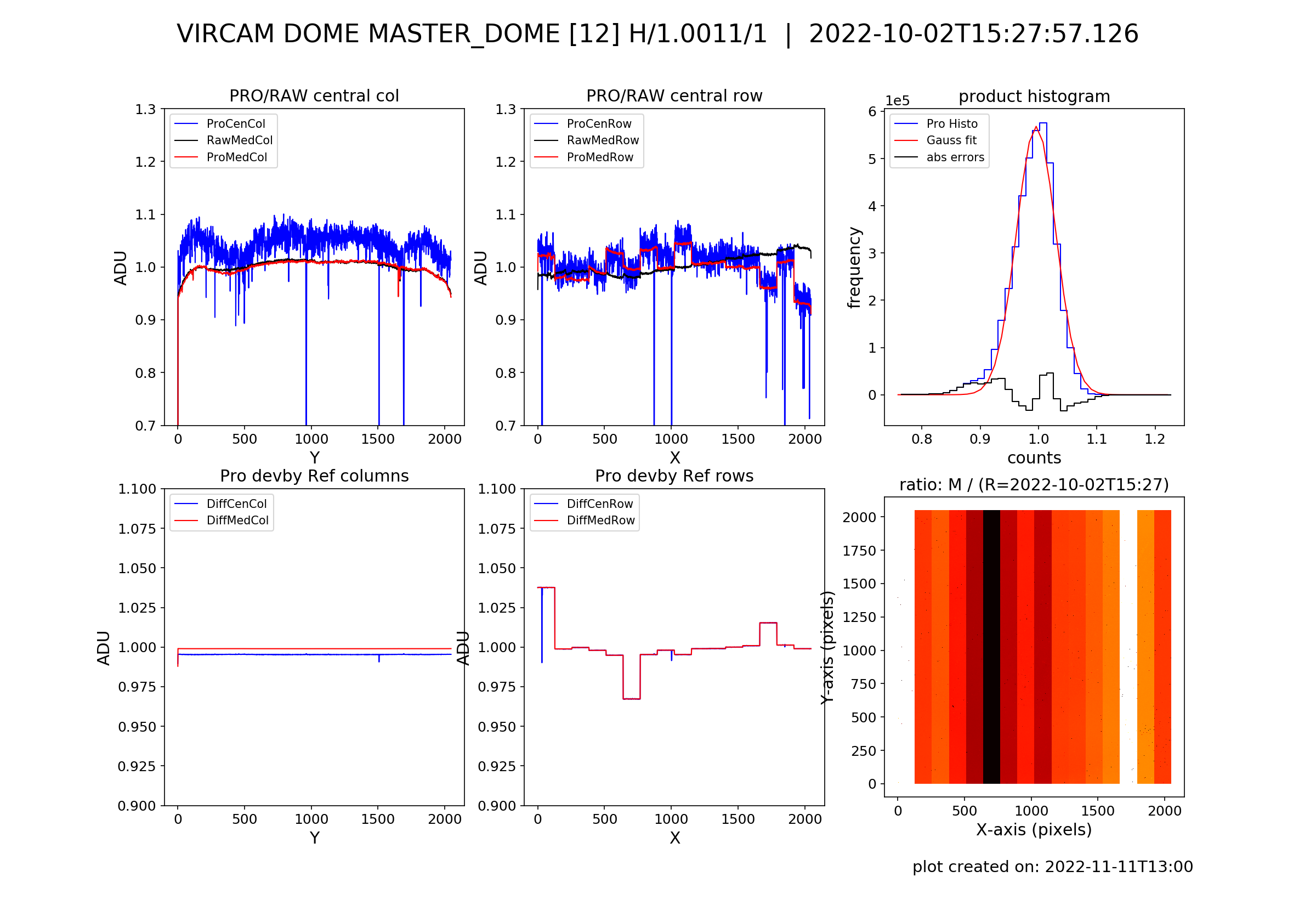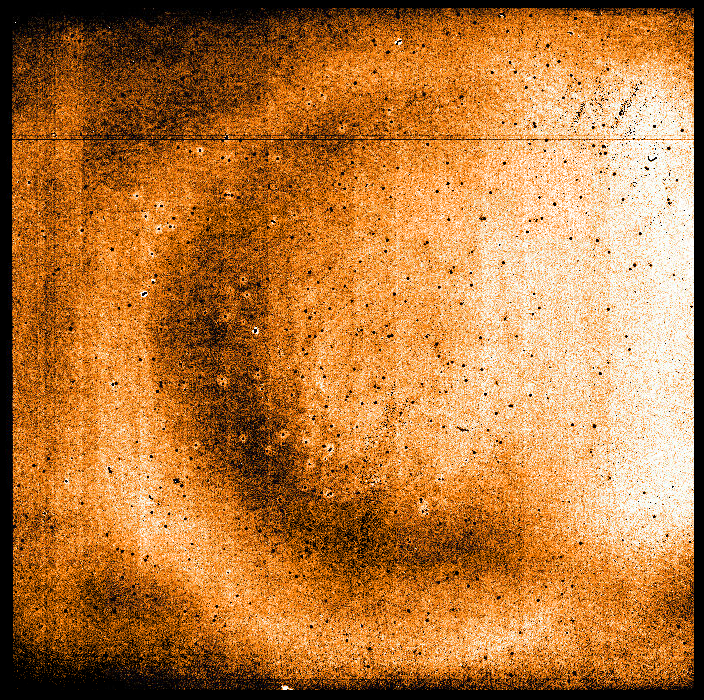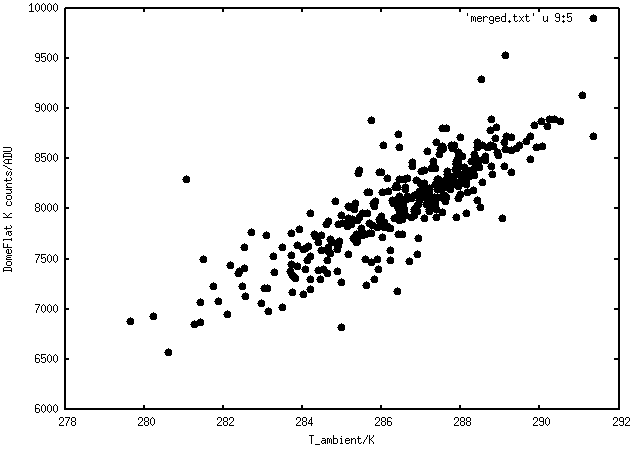 mirror sites:
PL (internal link)
HQ
[?]
mirror sites:
PL (internal link)
HQ
[?]
Quality Control and
Data Processing
|
VIRCAM: Quality of dome flats
VIRCAM dome flats are technical calibrations, to monitor flat field cosmetics. Dome flats are acquired by illuminating the screen inside the telescope building with several halogen lamps. They can serve as a substitute for twilight flats in case twilight flats cannot be acquired for a longer times.  RMS of master dome flat
RMS of master dome flat
The rms of the master dome flat is monitored for all filters: NB118, NB980, Y, Z, J, H ,K separately. The K-band is monitored here. Scoring&thresholds RMS of master dome flat Not scored No remarks. Algorithm RMS of master dome flat The QC.DOMERMS is a measure of RMS in ADU obtained from master dome flat products. It is the median of the absolute deviations from the median ( = MAD ) times 1.48 derived from the master dome flat.  RMS of ratio flat
RMS of ratio flat
The vircam dome flat pipeline recipe allows to specify a reference flat, which can be any master dome flat. The pipeline divides the master flat by the submitted reference flat and extracts some QC parameters of which the RMS of the ratio flat is the most important. The pixel-to-pixel relative response differences (= the fixed pattern noise), which dominate the RMS of the master flat, are canceled out in the ratio flat. The RMS of the ratio flat is therefore sensitive to other changes in the master flat, like:
The RMS of the ratio dome flat is monitored here. Scoring&thresholds RMS of ratio flat The values are not scored The maintenance of the reference flat means it has to be updated from time to time, typically twice a year and after interventions. The dome flat QC1 DB contains the name of the reference twilight flat (qc_dome_refname) and the time stamp of the reference dome flat (qc_dome_refdate). The master flat is divided by the reference flat, the RMS is taken. For reasons of demonstration we have performed the following exercise: We have processed the H-band dome flat from 2022-10-01 using the linearity calibration products CHANNEL_TABLE and BadPixelMap also from 2022-10-01. We have registered this MASTER_DOME_FLAT as REFERENCE_DOME_FLAT for the subsequent analysis. In a first sequence, we have processed some other H-band dome flats of 2022-10 and 2022-11 using the same REFERENCE_DOME_FLAT and the same CHANNEL_TABLE and BadPixelMap from 2022-10-01.
In a second sequence we have processed the 2022-10-01 dome flat a second time using the CHANNEL_TABLE from 2022-11-05.
The channel gain variations of the order of 2\% become visible only in the RATIO_DOME_FLATs where all other spatial large scale illumination are canceld out.  Counts in dome flats
Counts in dome flats
While twilight flats are affected by the decreasing sky brightness during dawn, dome flats are illuminated by a set of stable lamps. The average counts in dome flats is monitored here . The stability of the lamp within the series of five raw frames is monitored via the counts range parameter. While the dome flat field lamps, both the ones used for the H and K band as well as those used for the bluer bands Z, Y, J, NB118, NB980, are stable over a longer period, the K-band dome flat counts show a correlation with the ambient temperature (see Fig. below). Scoring&thresholds Counts in dome flats The values are not scored. On 2018-08-07, M1 and entrance window was washed. Counts of dome flats (which pass M1 and entrance window) increased from 6500 ADU to 7200 ADU for the Y-band e.g., a value with was registered the least time in late 2011. Algorithm Counts in dome flats The counts, the average over five raw frames is taken.
|
||||||||||||||||||||||||||||||||||||||||||||||||||||||||||||||||||||||||||||||||||||||||||||||||||||||||||||||||||||||||||||||||||||||||||||||||||||||||||||||||||||||||||||||||||||||||||||||||||||||||||||||||||||||||||||||||||||||||||||||||||||||||||||||||||||||||||||||||||||||||||||||||||||||||||||||||||||||||||||||||||||||||||||||||||||||||||||||||||||||||||||||||||||||||||||||||||||||||||||||||||||||||||||||||||||||||||||||||||||||||||||||||||||||||||||||||||||||||||||||||||||||||||||||||||||||||||||||||
| |
|||||||||||||||||||||||||||||||||||||||||||||||||||||||||||||||||||||||||||||||||||||||||||||||||||||||||||||||||||||||||||||||||||||||||||||||||||||||||||||||||||||||||||||||||||||||||||||||||||||||||||||||||||||||||||||||||||||||||||||||||||||||||||||||||||||||||||||||||||||||||||||||||||||||||||||||||||||||||||||||||||||||||||||||||||||||||||||||||||||||||||||||||||||||||||||||||||||||||||||||||||||||||||||||||||||||||||||||||||||||||||||||||||||||||||||||||||||||||||||||||||||||||||||||||||||||||||||||||
 |
|
||||||||||||||||||||||||||||||||||||||||||||||||||||||||||||||||||||||||||||||||||||||||||||||||||||||||||||||||||||||||||||||||||||||||||||||||||||||||||||||||||||||||||||||||||||||||||||||||||||||||||||||||||||||||||||||||||||||||||||||||||||||||||||||||||||||||||||||||||||||||||||||||||||||||||||||||||||||||||||||||||||||||||||||||||||||||||||||||||||||||||||||||||||||||||||||||||||||||||||||||||||||||||||||||||||||||||||||||||||||||||||||||||||||||||||||||||||||||||||||||||||||||||||||||||||||||||||||||
